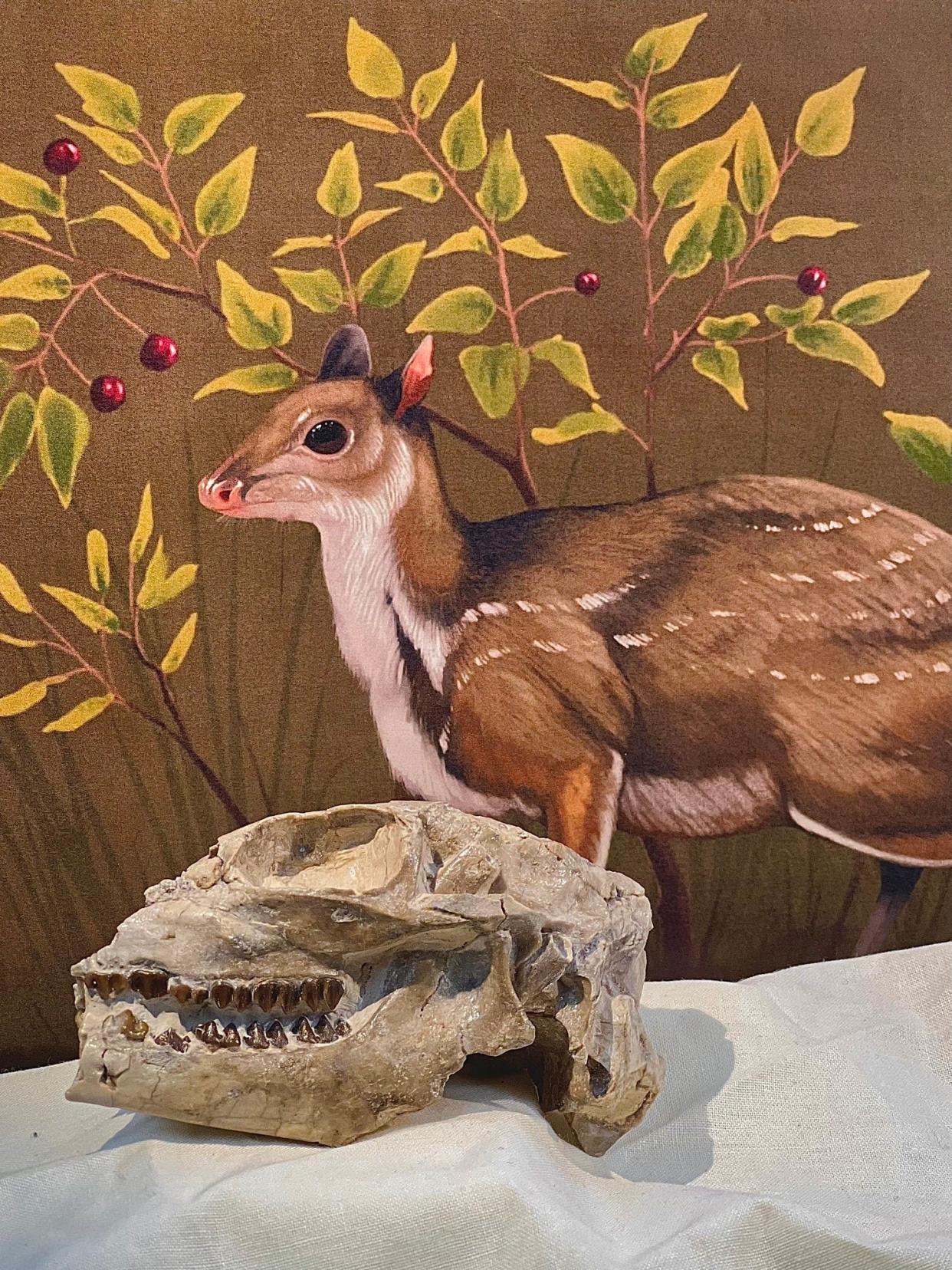Cat-sized and hornless, this newly discovered deer genus roamed the Dakotas 32 million years ago
Researchers have found a new genus of deer in fossils found at Badlands National Park in South Dakota, the National Park Service announced Thursday.
The deer presented by the researchers is markedly different from the animal most know today, as reconstructions suggest that it would have been about the size of a house cat.
The Park Service said in a press release that the tiny, hornless deer lived in South Dakota about 32 million years ago, during the Oligocene Epoch. It belongs to an extinct family of deer that are considered relatives to the modern-day chevrotains, or mouse deer, typically found in the tropical forests of central and western Africa and southeast Asia.
Scientists from the park, the American Museum of Natural History and California State Polytechnic University published their findings in the Proceedings of the South Dakota Academy of Science.
New deer found by park visitor, brings career full circle

Research into the deer was prompted by the discovery of a nearly in-tact skull by a visitor and reached the scientists through a report filed by Geoscientists-in-the-Parks intern Tiffany Leone in 2016.
“It's a really neat example with this paper to be able to highlight citizen science, because this is the only skull of this animal ever found,” Mattison Shreero, co-lead researcher from the National Park Service said in the press release. “And if somebody had walked away with it, or if they just hadn't reported it and it had eroded away, we would have never known about it.”
The deer genus, Santuccimeryx, was named to honor the work of Vincent L. Santucci, the Senior Paleontologist and Paleontology Program Coordinator in the Geologic Resources Division of the National Park Service.
"I am both personally and professionally grateful to be associated with this important new fossil discovery from Badlands National Park, where I began my career as a paleontologist," Santucci said in the press release.
This article originally appeared on USA TODAY: House cat sized extinct deer genus found at Badlands National Park
